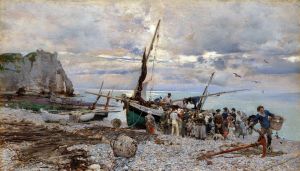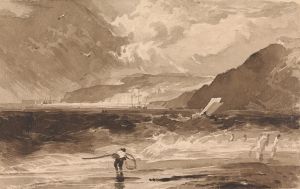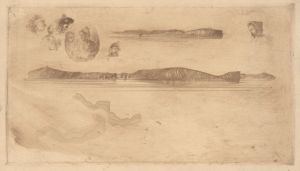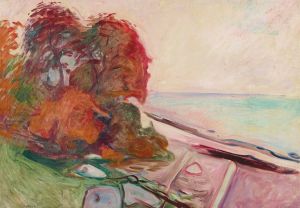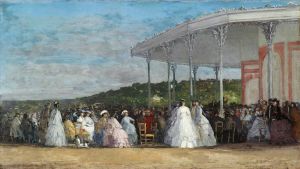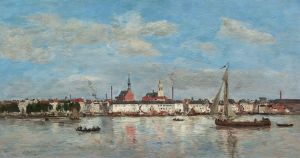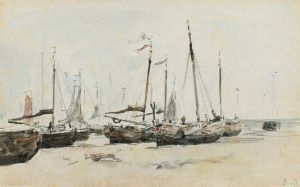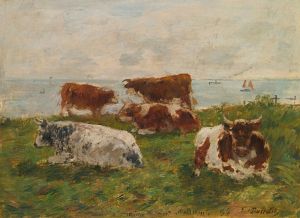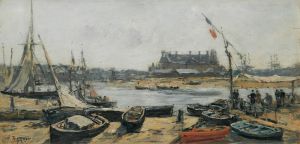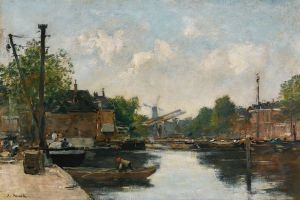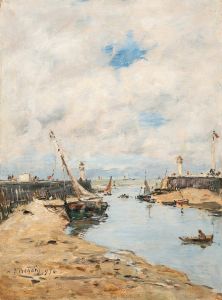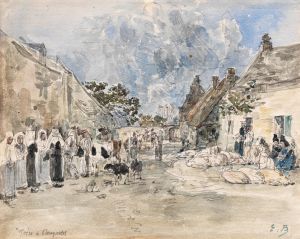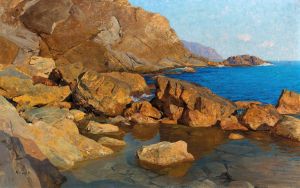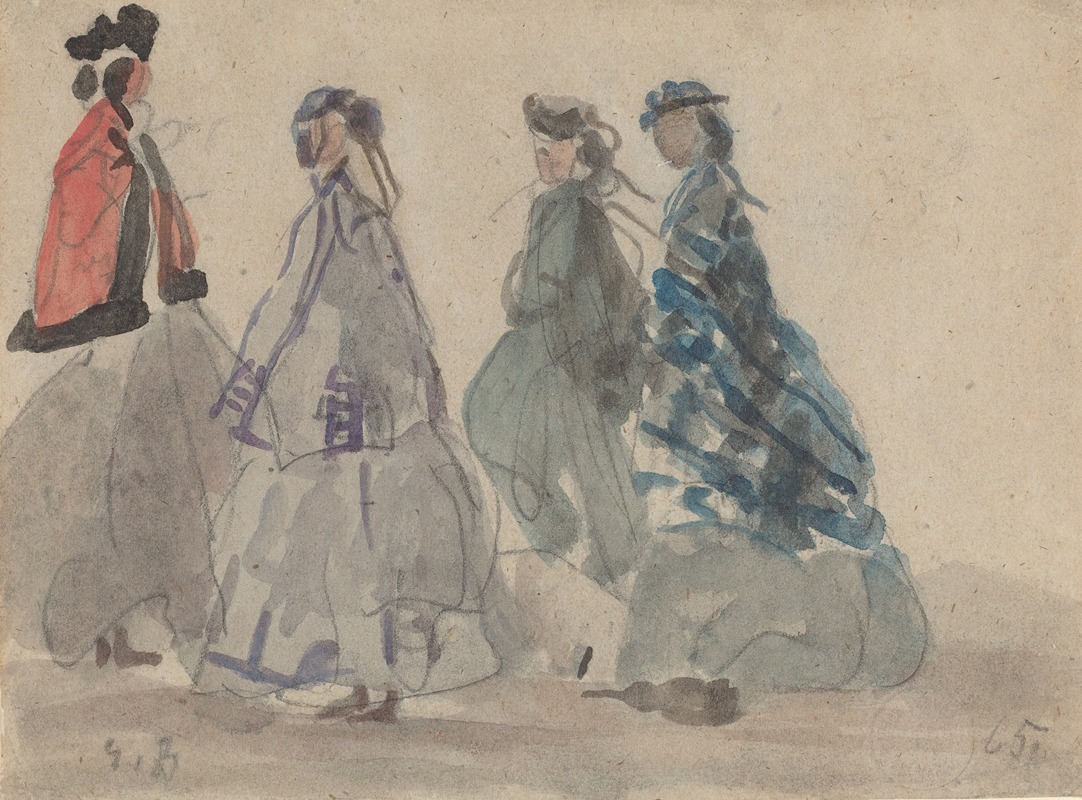
Four Women at Trouville
A hand-painted replica of Eugène Boudin’s masterpiece Four Women at Trouville, meticulously crafted by professional artists to capture the true essence of the original. Each piece is created with museum-quality canvas and rare mineral pigments, carefully painted by experienced artists with delicate brushstrokes and rich, layered colors to perfectly recreate the texture of the original artwork. Unlike machine-printed reproductions, this hand-painted version brings the painting to life, infused with the artist’s emotions and skill in every stroke. Whether for personal collection or home decoration, it instantly elevates the artistic atmosphere of any space.
"Four Women at Trouville" is an oil painting created by the French artist Eugène Boudin in 1869. Boudin, born in 1824, is often regarded as one of the precursors of Impressionism, known for his masterful depictions of coastal scenes and his ability to capture the transient effects of light and atmosphere.
This particular painting, "Four Women at Trouville," showcases Boudin's talent for portraying leisurely seaside life, a subject he frequently explored. Trouville-sur-Mer, a fashionable seaside resort in Normandy, France, was a popular destination for the French bourgeoisie during the 19th century. Boudin spent considerable time in Trouville, and it became one of his favorite locations to paint.
The painting features four women dressed in elegant, contemporary attire, seated on the beach. They are depicted in a relaxed manner, engaging in conversation and enjoying the seaside ambiance. The women's dresses are rendered in delicate, light colors, which contrast with the darker tones of the sand and the sea. Boudin's brushwork is loose and fluid, capturing the movement of the figures and the play of light on their garments.
Boudin's ability to capture the essence of the moment is evident in this work. The sky, painted with soft, wispy clouds, suggests a gentle breeze, while the calm sea in the background adds to the serene atmosphere. The composition is balanced, with the figures placed slightly off-center, allowing the viewer's eye to wander across the scene and take in the details of the surroundings.
"Four Women at Trouville" exemplifies Boudin's skill in plein air painting, a technique that involves painting outdoors to directly observe and capture the effects of natural light. This approach was revolutionary at the time and influenced many of Boudin's contemporaries, including Claude Monet, who is known to have admired Boudin's work.
The painting is part of the collection at the Musée d'Orsay in Paris, which houses an extensive array of 19th-century art. Boudin's works, including "Four Women at Trouville," are celebrated for their contribution to the development of modern landscape painting and their influence on the Impressionist movement.
In summary, "Four Women at Trouville" by Eugène Boudin is a notable example of 19th-century French painting, capturing the leisurely life of the bourgeoisie at a popular seaside resort. Boudin's use of light, color, and composition in this work highlights his importance as a precursor to the Impressionist movement and his enduring legacy in the history of art.





